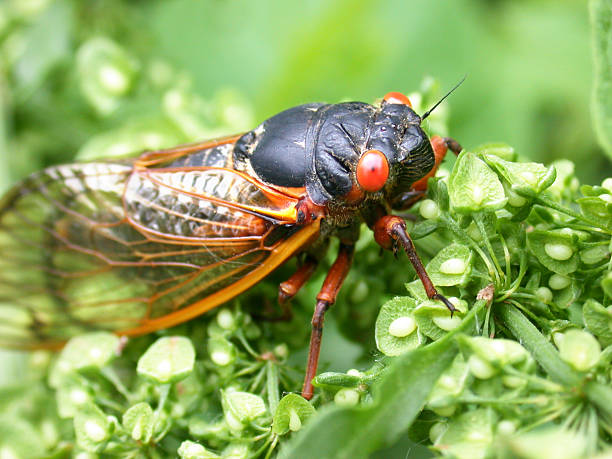Answering your periodical cicada-mania questions for this year’s dual emergence

MACOMB, Ill. — Cicada-mania has been building to almost mythical levels in 2024. Nearly every story on my news feed references this historic event about to occur in Illinois. Despite the media frenzy, there are still lots of questions about the upcoming cicada emergence. So, I might as well hop on this cicada train answering some common questions about periodical cicadas.
Before you read any further, my colleague, Ken Johnson, covered this topic in a recent article. Essentially, everything you’re about to read is taken from Ken’s article. I’m only pulling a few bits of information based on the questions we have been getting at the Extension office. If you want to read Ken’s excellent article, find it at go.Illinois.edu/cicada
Two broods are emerging at the same time. Does that mean double the cicadas?
Not really. Don’t get me wrong, there will still be a lot of cicadas. An estimated 1.5 million per acre in suitable habitat locations. However, despite the dual emergence, the broods are unlikely to overlap. The area where they are expected to overlap is Sangamon County. Congratulations Springfield! Other counties where both broods are present are Logan, Macon and Livingston. What is impressive about this event is the sheer geography that will be covered by these two broods.
1.5 million cicadas per acre! Will we be under a blanket of bugs this spring?
Brood XIII cicadas have been underground for 17 years. Brood XIX has been underground for 13 years. The entire time these cicada larvae have been underground they are feeding on tree roots. If that area didn’t have trees at the time when the cicadas were out the last time laying eggs 17 and 13 years ago, you may have far fewer cicadas than other locations. This may be common in neighborhoods that have been clear-cut for development or large fields and pastures with few to no trees.
The density of cicadas will vary. It is likely to find higher-density pockets in forested areas or neighborhoods with a developed tree canopy. But even in these areas, the density will fluctuate.
When will the cicadas emerge?
We expect to see the first cicadas show up around mid-May. Once the soil warms in the spring to 64°F at 8 inches deep they will surface, shed their exoskeleton into their adult form, and start singing.
Are periodical cicadas going to kill my trees? What can I do to stop them?
This is perhaps the most common question I have received. Female cicadas have a saw-like ovipositor that cuts a slit in small tree branches to lay her eggs. The female is attracted to branches less than an inch in diameter for egg-laying. Our larger trees will be fine. They may lose their branch tips, but it won’t be enough to hurt the tree. The trees at risk are our smaller newly planted trees where most of the branches (and maybe even the trunk) are conducive to egg laying. And when you get 1 million cicadas making tiny cuts on your baby tree, that can add up to major damage and even death to the plant.
It is not recommended to spray your trees with any insecticide. Instead, the best defense for a homeowner is to use physical exclusion. Wrap your young trees in insect netting with a mesh size of a ¼-inch or less, and tie the netting to the base of the trunk to prevent the cicadas from crawling up the trunk and laying their eggs. Your tree will look like a giant ice cream cone. It may be helpful to build a frame around the plants, cicadas may still be able to lay eggs on branches that are touching the netting.
What should I do about all these cicadas?
Observe them. Recognize you live on an awesome planet. And enjoy the show.
Want more cicada information? The Good Growing Podcast will be posting more cicada content in April and May. You can find us on any major podcast app.
Miss Clipping Out Stories to Save for Later?
Click the Purchase Story button below to order a print of this story. We will print it for you on matte photo paper to keep forever.

